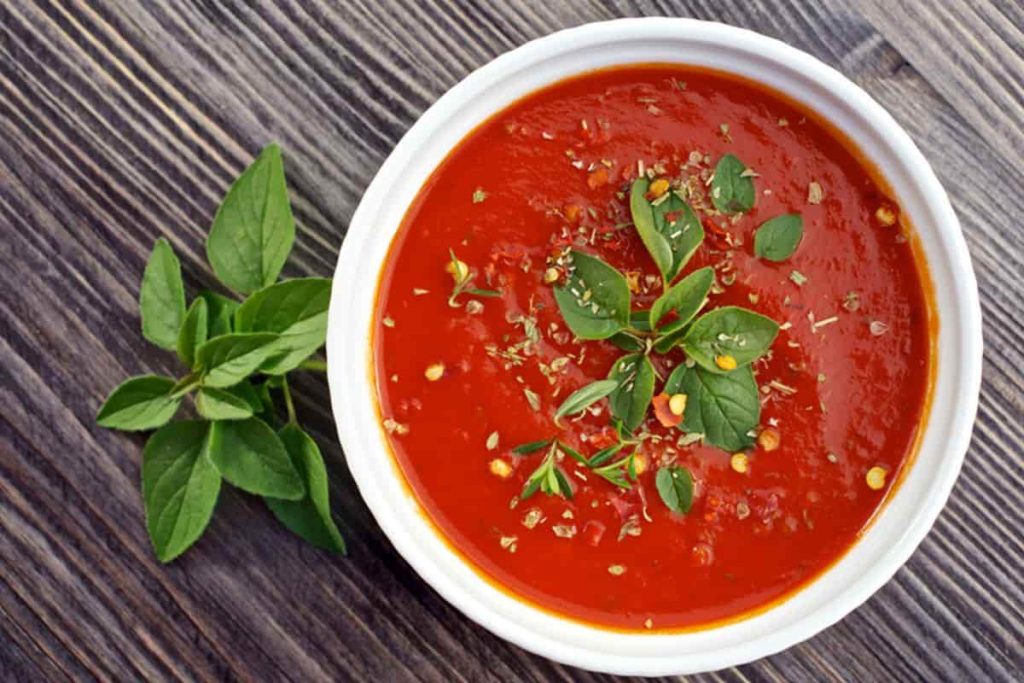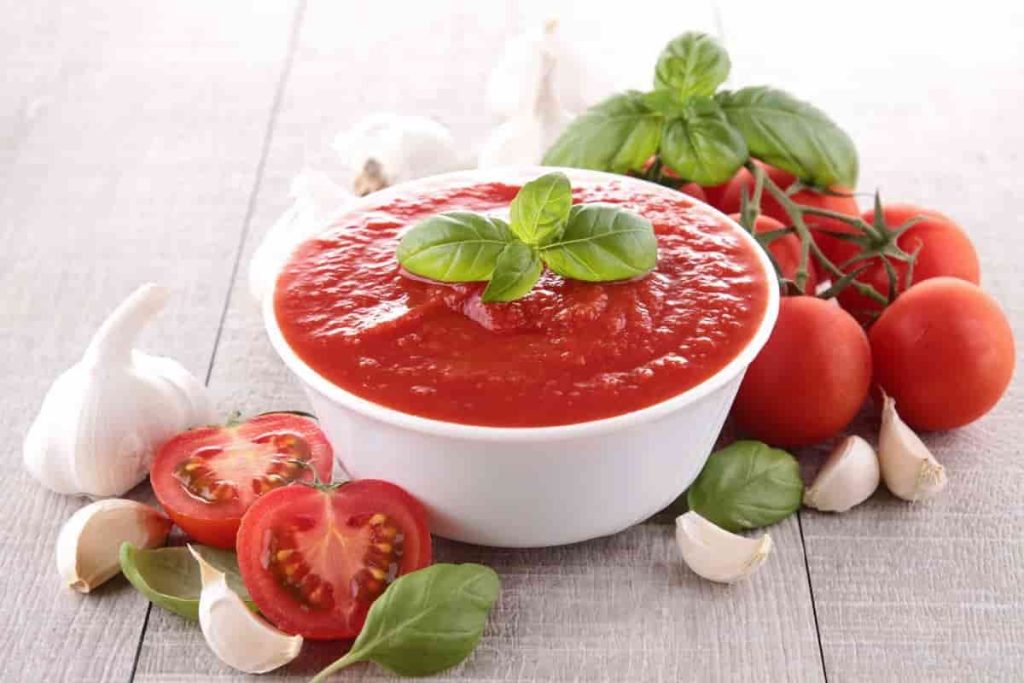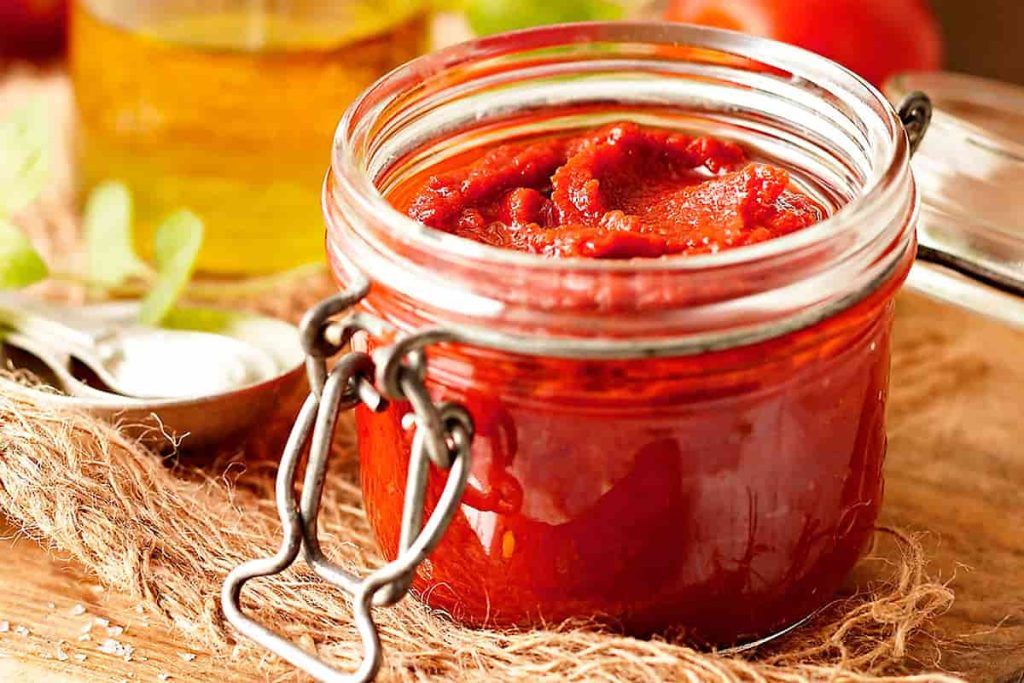The role of potassium in your diet is very important. Here you will learn if the content of potassium in tomato paste is low or high. And how much your intake of it should be.
All of the meals that we consume have some amount of the mineral potassium, however, some have more than others. When your kidneys were functioning properly, they eliminated any potassium that was present in your body in excess.
When kidney function is impaired or absent entirely, there is a risk of hyperkalemia, a condition in which blood potassium levels are elevated to dangerously high levels.
Potassium controls the rate at which your heart beats and assists in the normal functioning of your other muscles. It is possible to have a quick heartbeat or overall muscle weakness, cramps, or stiffness if you have an excessive amount of potassium in your blood.
These symptoms must be taken seriously and addressed right away by a medical professional.
Several factors outside nutrition can contribute to elevated potassium levels. The presence of hyperkalemia may be due to an infection or even an inaccurate reading of a blood sample.
Absence from scheduled dialysis treatments is the most common cause. If you skipped a treatment, you would have the equivalent of four to five days’ worth of potassium in your blood, which can cause a heart attack.
Treatments shouldn’t be skipped or cut short in any way.
The good news for those of you who are now undergoing dialysis is that the treatments are successful in flushing potassium out of the body. Patients who are being treated with peritoneal dialysis can even require potassium supplements.
Patients who are undergoing hemodialysis are required to maintain a constant potassium intake, which is typically between 2000 and 2500 milligrams per day. However, there are individual variables, and your dietitian will be able to tell you what a safe level is for your diet specifically.
Fruits and vegetables make up a significant portion of the diet’s potassium content. On the other hand, keeping a healthy potassium level is not too difficult if one makes wise food choices.

As an illustration, the following list of fruits are commonly consumed for breakfast due to the high levels of potassium that they contain (1 cup servings):
- blueberries (frozen) 138 mg
- strawberries 276 mg
- One medium banana 467 milligrams
As can be seen, blueberries contain only one-third and strawberries only two-thirds of the quantity of potassium that is found in bananas.
How things are processed also contributes to the differences. Tomatoes are regarded as a fruit rich in potassium; nevertheless, how they are consumed can make a significant impact on that content (1 cup servings):
- tomato paste 2455 mg
- 1065 milligrams of tomato purée
- 400 milligrams of fresh tomatoes
It is quite evident that the optimal choice here would be a tomato sauce that was prepared using only fresh tomatoes rather than tomato paste.
Potatoes are another common vegetable that contains a significant amount of potassium. Some methods can assist in lowering the potassium content of some foods, however, boiling alone can help:
- baked Potato 844 mg
- 515 milligrams Potato, boiling
Rice and pasta are good alternatives to potatoes and should at the very least be rotated with potatoes throughout the week. The amount of sodium in one cup of white rice is 222 mg, and one cup of spaghetti has 43 mg of sodium. Chips made from potatoes count as well.

While an ounce of potato chips has 494 milligrams of potassium, an ounce of corn chips only contains roughly 40 milligrams, which is a tenth of the amount!
Other substitutions can be made that are more comparable, such as the following for one cup servings of greens:
- beet greens 1309 mg
- spinach 839 mg
- kale 296 mg
- turnip greens 292 mg
It should come as no surprise that turnips are a superior option over beet greens.
Even though foods high in protein like meat, chicken, and fish all contain potassium as well, we do not limit our consumption of these meals because the human body needs protein.
In general, when it comes to counting, you can figure out that there are 100 milligrams of potassium for every ounce of protein. That comes out to approximately 400–500 mg daily for the typical diet.
Is there a lot of potassium in tomato paste?
Each quarter-cup serving of tomato paste has a potassium content of 670 mg. There is a possibility that other tomato-based products also contain significant levels of potassium.
When compared to a medium-sized fresh tomato, which provides around 290 milligrams of lycopene, a half-cup serving of tomato puree has 560 milligrams.
Is there a significant lack of potassium in tomato paste?
According to the data provided by the USDA, a single medium tomato has 292 milligrams of potassium.
However, if you consume more concentrated forms of tomatoes, such as tomato paste (162 milligrams per tablespoon) or tomato sauce, you will receive an even greater benefit from the potassium content of tomatoes (728 mg per cup).
What kind of food contains the most potassium?

The following is a list of 10 foods that are high in potassium:
- Bok choy, one cup once it’s been cooked (630 mg)
- Potato, medium (610 mg)
- One-half cup of white beans (600 mg)
- Beets, 1 cup (520 mg)
- 1 cup of Brussels Sprouts after they have been cooked (500 mg)
- Broccoli, 1 cup cooked (460 mg)
- Cantaloupe, 1 cup (430 mg)
- Banana, 1 medium (420 mg)
Are there large levels of potassium in canned tomatoes?
Tomatoes provide a lot of potassium, however, most pasta dishes are served with sauces that don’t have tomatoes as the main ingredient.
If you really must choose a dish that contains tomato sauce, then you should request that it be served on the side. Caution is warranted because soul food is frequently heavy in potassium. Steer clear of foods like black-eyed peas and dry beans, as well as cooked greens and spinach, yams, and sweet potato pie.
Which variety of tomatoes contains the least amount of potassium?
The potassium content of a single tomato that is of medium size is 292 milligrams, while the potassium content of a tomato that is of tiny size is 216 milligrams.
Both the plum tomato and the Italian tomato have the same amount of potassium in them, which is 147 milligrams. Forty milligrams of the necessary mineral can be obtained from just one cherry tomato.
Is the potassium content of cooked tomatoes reduced?
Depending on how much of it you consume, potassium can be a source of concern. For instance, the quantity of potassium in one or two slices of raw tomato compared to the amount of potassium in one cup of cooked tomato is quite a little lower.
How can the potassium content in tomatoes be lowered?
Before using them in your cooking, blanching your vegetables for one minute in water that has been brought to a boil is another way to help lower the amount of potassium they contain. When cooking a sauce with tomatoes as the main ingredient, use fewer tomatoes than you would normally.











Your comment submitted.